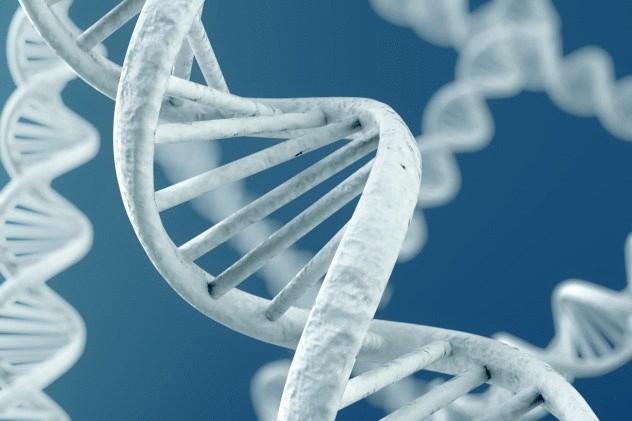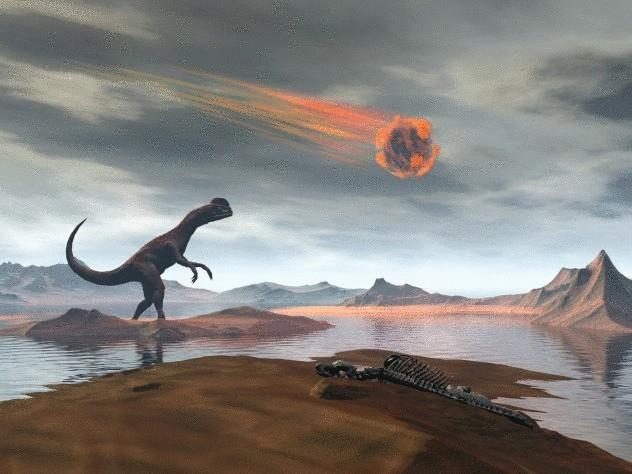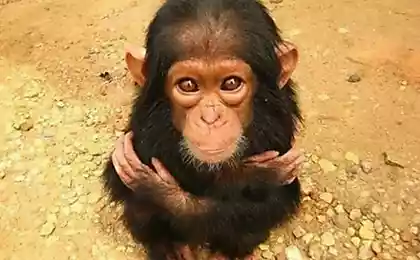733
10 attempts to explain the phenomenon of life without Darwinian evolution

After round-the-world journey Charles Darwin — with the help of Alfred Russell Wallace — came to believe that nature dominates the system, which he called "natural selection", which, in turn, generates a process of evolution. In short, the organisms that live long enough to reproduce, transmit to him their quality. Organisms that die for one reason or another, but rather their quality are removed from the gene pool. Over time, the buildup of these qualities can produce a completely new species that are more adapted to the environment than their predecessors.
The theory of evolution is widely accepted as fact by the scientific community. But before Darwin there were many who struggled in trying to explain why life is as it is, and after Darwin were also many who tried to refute or Refine the theory.
"Paradise mountain", Carl Linnaeus To Darwin, 1707 – 1778

Carl Linnaeus was one of the most important figures in the field of modern biogeography. Linnaeus was responsible for creating the Latin binomina items — for example, Homo sapiens — which is used today. He classified thousands of plants and animals.
Like many at the time, Linnaeus suggested that the parable of creation and the flood in the biblical book of Genesis were true. Therefore, any discovery or hypothesis consistent with the picture of the world. As a compromise, Linnaeus formed the idea of "mountain Paradise".
Linnaeus suggested that it was once a big mountain-island on the equator with different stations — biomes — along its slopes. It was a place of creation, and all living organisms that exist today, were established there. As the water receded from the island, the animals left the mountain and went to their current habitat. This process was repeated in the process of Noah's flood, but this time on mount Ararat in Turkey.
Linnaeus was a scientific celebrity in his time, but his hypothesis of the "heavenly mountains" still meets some eyebrows in the scientific community. How animals like penguins survived the trek through the desert, getting to his Arctic home?
"And the creation", Georges Louis-Leclerc, count de Buffon To Darwin, 1707 – 1788

Georges Louis Leclerc, Comte de Buffon, was a French scientist who suddenly decided wrote a 44-volume collection of all human knowledge about the natural world called Historie Naturelle.
Buffon also noted that similar but separated regions sheltered different biota — the totality of the species. For example, despite the fact that the Arctic and Antarctic have similar climates, in the North there are no penguins. This observation became a "law buff" and it is true to this day.
He rejected the idea of a "Paradise of mountains" of Linnaeus and suggested that God must have created all animals as they may be, near the North pole during a warm period. Then they spread to the rest of the planet. Buffon considered the distribution is more plausible than mount Ararat. However, Buffon also thought that organisms can change organically, however, decided that this is done via "organic particles," the components of the environment that enter the body of animals and change them.
"Mountains of creation" Carl Willdenow Before Darwin, 1765 – 1812

Karl Ludwig of Willdenow was a German scientist, mainly a botanist. Like Linnaeus, Willdenow classified thousands of species of plants. His herbarium numbered 20 000 at the time of his death and it still can be found in the Berlin Botanic garden.
He took the concept of a "heavenly mountains" and developed to the point that at the time of creation was just a lot of places — mountains, towering above sea level at the time of the creation and the Flood, of course. Certainly Willdenow came to this idea because of his passion for plants. Since they are mostly stationary, Willdenow probably could not imagine a variety of plants that inhabit the world in just one place.
Hypothetical mountain Willdenow raised each different biota on Earth, and when the waters receded, plants and animals — which were created as we know them descended from every mountain to spread around.
"Lomakovsky evolution", Jean-Baptiste Lamarck To Darwin, 1744 – 1829

From the General biology course you had to know about Jean-Baptiste Lamarck the. Biologists used to scold him before you talk about Darwin, since the first ideas about evolution were completely wrong.
The hypothesis of Lamarck about evolution is largely focused on the idea of "exercise and neupaney" bodies. He noticed that many organisms possess vestigial structures, and suggested that animals that are more likely to use certain organs or limbs will be more likely to adapt to their exercise. Attributes acquired during the life of one of the parents can be transmitted to its offspring. For example, a giraffe stretches his neck to reach the highest branches — and therefore his progeny will be more long necks.
The idea of "exercise and neupaney" was a good working hypothesis, until Mendeleev genetics, but it has some obvious holes. For example, if someone's parent lost a leg in a car accident, his child is born without a leg. If he's obsessed with bodybuilding, it does not mean that the child will be born with a perfect figure.
Lamarkism inspired Soviet horticulturist Ivan Michurin, which in turn inspired Trofim Lysenko and Joseph Stalin to use michurinska in Soviet agriculture. It was not very good, but it took another 20 years to get rid of it.
"Simple forms", the unknown author After Darwin, 2011

X-Evolutionist is a blogger with a very specific theme, as you can guess by its nickname. It is, of course, does not have the same academic merit as the others in this list, but her own idea of evolution challenged our assumptions about the classification of species. Well, courage is also good.
X-Evoluonist suggests that there are a number of basic animal forms on the planet, like cat, bear or dog. People can look different depending on the habitat, but we all remain one and the same species, capable of reproduction. X-Evolutionist applies this logic to other animals. Dogs, wolves, coyotes, she says, it's the same animals that can interbreed — and therefore look different, depending on the environment. The same idea applies to bears — white, black or grizzly bears, and lions, and tigers, and elephants.
The idea is interesting, because many species and subspecies are, in fact, capable of sexual reproduction. X-Evolutionist uses this idea as an argument against the protection of endangered species, because he believes that no species may disappear completely.
This idea largely depends on the concept of species, which States that the species is able to reproduce the same. But in the end there is always a species that can't interbreed: pandas and koalas are unable to interbreed with polar bears; leopards with cheetahs, and so on.
"Apeiron", Anaximander To Darwin, 610 – 546 BC

Anaximander was an ancient Greek philosopher. He summarized his findings and views on the natural world in a long classic Ancient Greek poem called "On nature".
The ideas of Anaximander on the origin of life some scientists resemble something like proteolytically theory. Anaximander suggested that the Earth was originally made out of the unformed matter called Apeiron, which later began to take shape. Organisms like plants and animals started to appear out of the mud and the first animals were fish, from which later came people.
In addition to his creations, Anaximander also created one of the first maps of the world and dabbled a bit in astronomy. However, most of the work Anaximander is lost in history, and there is no way to know whether he studied fossils or composed "On the nature" on the basis of natural observations and mythology of the time.
"The selfish gene", Richard Dawkins After Darwin (first suggested in the 1960s)

Natural selection, as biologists believe, works best at the level of populations of organisms, especially of Darwin, since he didn't have a clue about genetics. In the 1960s, some biologists began to suggest that natural selection is better understood at the level of the gene. This idea popularized by the famous biologist Richard Dawkins in his book "the Selfish gene", which was published in 1976.
Look at the evolution of the genome in the center means that each gene in the organism competes with other versions of the same genes, or alleles. In other words, genes are acting mostly individually, using the bodies of large organisms, dogs or trees to ensure their own survival. About evolution at the level of organism, says Dawkins, to think at all is impossible, because it assumes that all genes in an organism cooperate, not compete.
Look at evolution from the point of view of the gene makes sense in light of the popular idea of the origin of life in the primary broth. Of course, the theory Dawkins has a lot of objections, including the fact that some alleles are dependent on others for survival.
The neutral theory of molecular evolution, Kimura motu After Darwin (first introduced in the late 1960s)

Motu Kimura was a well-respected Japanese biologist who studied in Japan and in the United States and has written hundreds of articles. Kimura has contributed to the promotion of biological concepts such as migration, genetics and natural selection. Perhaps his most interesting idea was the fact that some evolutionary changes at the molecular level do not always serve the actual purpose or just are neutral in the organism's struggle for existence. This concept became known as the neutral theory of molecular evolution.
Neutral theory is very easy to misunderstand. While the organism or the population as a whole can adapt in a niche by natural selection, Kimura suggested that in each population or organism is a mutation, which have no adaptive advantage or disadvantage, but are present in the population due to genetic drift. Neutral theory does not neglect the importance of natural selection at the level of organism or population, but suggests that not every component of the body is the result of natural selection.
The struggle for existence, al-Jahiz Before Darwin, 776 – 868

Al-Jahiz was an Islamic scholar who wrote on different topics. One of his most famous surviving work is the "Book of animals", in which he expressed biological observations that is very similar to the theory of evolution of Darwin.
Al-Jahiz set out its views in three parts: the struggle for existence, transformation of species and environmental factors. Al-Jahiz said that every individual in a sense is at war with another life. Environmental factors help the organisms to gradually develop a new quality to the point that there are absolutely new types, allowing them to better compete in the struggle for existence.
If al-Jahiz was not a precursor of Darwin, at least he was a precursor of Lamarck. The main difference is that, as a devout Muslim living in medieval Iraq, al-Jahiz postulated that God himself created life, and God's will is the determining factor in evolution.
"The laws of organic life" Erasmus Darwin Before Darwin, 1701 – 1832

Given how wayward and unlucky was the young Charles Darwin, may be a surprise that his grandfather, Erasmus Darwin, was one of the smartest people in the 18th century. He was not only a naturalist and botanist, but also a doctor, philosopher and poet. Like Anaximander, Erasmus wrote down his observations in verse. Erasmus was different in that it used an integrated approach to observations of life. He was watching domesticated and wild animals, he studied paleontology, biogeography, embryology and anatomy.
Erasmus put forward the hypothesis that life originated from a common ancestor, but could not explain how she was able to evolve the species. Despite the fact that he was never familiar with the writings of Lamarck, the ideas of Erasmus on "exercises and newprinter" was in General similar to lamarkism. Also Erasmus anticipated the ideas of his grandson, expanding the ideas of "exercises and neupaney". He suggested that the animals might also change in the process of sexual selection and competition.
Punctuated equilibrium, Niles Eldredge and Stephen Gould After Darwin (first suggested in 1972)

Although we partially touched punctuated equilibrium above, this theory is too important to avoid it. The theory of evolution says that evolution is a gradual process in which species slowly accumulate new qualities before becoming a new species.
In contrast, punctuated equilibrium suggests that life usually remains stable, and then, within a short period of time, quickly develops in response to certain events. In the scientific community, many accept punctuated equilibrium as an improvement or addition to Darwin's theory, because this theory fits well with the fossil record and can even be observed in action.
Materials listverse.com
Source: hi-news.ru























